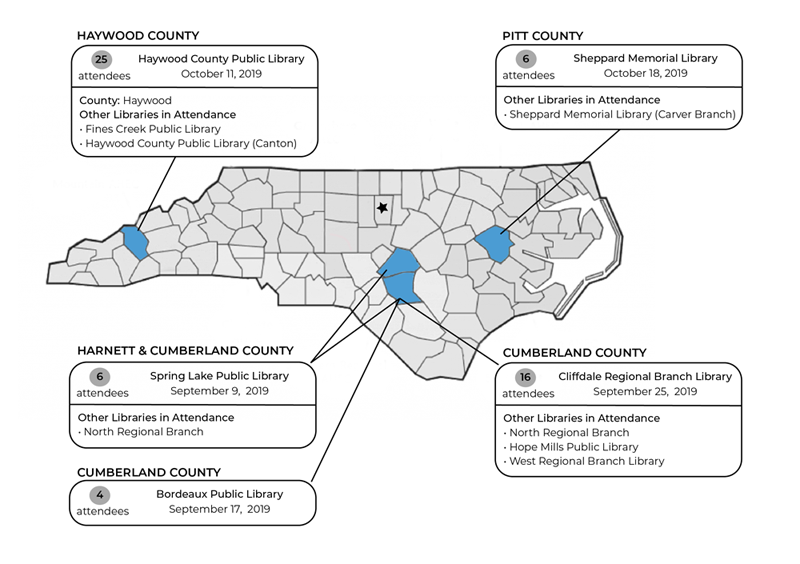Summary of HSL work
In spring 2019 a team of four librarians at UNC’s Health Sciences Library (HSL) received an All of Us Community Engagement Project Award from the National Network of Libraries of Medicine (NNLM) to conduct an outreach project to reach rural and underserved communities in North Carolina. The aims of the grant were to:
- Train public library staff on providing consumer health information services in their communities.
- Enable public library staff to offer the Engage for Health program at their libraries. This program empowers patients to ask their doctors questions and take an active role in their healthcare.
- Train interprofessional students on health literacy principles and effective communication with patients and their families.
The team, consisting of Dr. Nandita Mani, Michelle Cawley, Terri Ottosen, and Megan Fratta, held two-hour training sessions for public library staff at five libraries in rural and underserved areas of North Carolina in September and October 2019.
Data Set
Data used in this visualization were gathered from training sessions held in five libraries across three North Carolina Area Health Education Center (AHEC) regions. At each training, the HSL team recorded number of attendees and the libraries represented and gathered feedback through an evaluation form.
Deliverables
An HSL graduate assistant used Microsoft Publisher to create the state map and an accompanying infographic. Through the five training sessions, HSL staff reached 57 library staff members from 12 libraries in four North Carolina counties. The map provides a geographic representation of the communities that were reached through this grant project.
Future Directions
The trainings represented in this visualization demonstrate the impact and reach of HSL and the University Libraries throughout the state. As next steps, the team plans to engage in additional community outreach and health literacy projects that target rural and underserved populations. Future visualizations will integrate the number of participants reached through the upcoming Engage for Health sessions.



